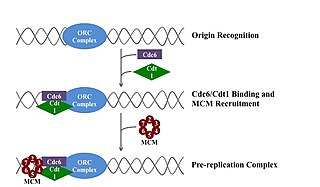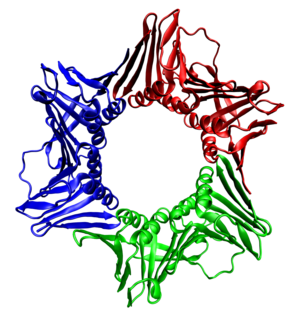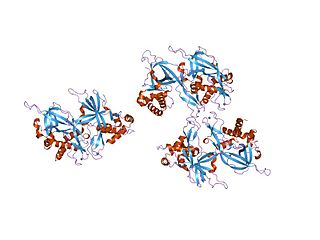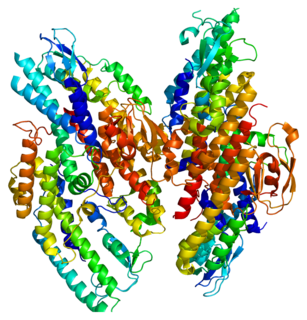GINS is a protein complex essential to the DNA replication process in the cells of eukaryotes. The complex participates in the initiation and elongation stages of replication.

A protein complex or multiprotein complex is a group of two or more associated polypeptide chains. Different polypeptide chains may have different functions. This is distinct from a multienzyme complex, in which multiple catalytic domains are found in a single polypeptide chain.

In molecular biology, DNA replication is the biological process of producing two identical replicas of DNA from one original DNA molecule. DNA replication occurs in all living organisms acting as the basis for biological inheritance. The cell possesses the distinctive property of division, which makes replication of DNA essential.
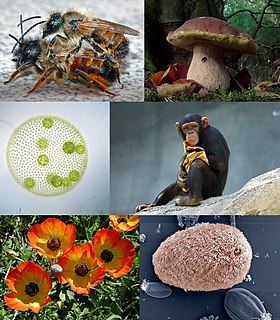
Eukaryotes are organisms whose cells have a nucleus enclosed within membranes, unlike prokaryotes, which have no membrane-bound organelles. Eukaryotes belong to the domain Eukaryota or Eukarya. Their name comes from the Greek εὖ and κάρυον. Eukaryotic cells also contain other membrane-bound organelles such as mitochondria and the Golgi apparatus, and in addition, some cells of plants and algae contain chloroplasts. Unlike unicellular archaea and bacteria, eukaryotes may also be multicellular and include organisms consisting of many cell types forming different kinds of tissue. Animals and plants are the most familiar eukaryotes.
The name GINS is an acronym created from the first letters of the Japanese numbers 5-1-2-3 (go-ichi-ni-san) in a reference to the 4 protein subunits of the complex: Sld5, Psf1, Psf2, and Psf3. [1]
Japanese is an East Asian language spoken by about 128 million people, primarily in Japan, where it is the national language. It is a member of the Japonic language family, and its relation to other languages, such as Korean, is debated. Japanese has been grouped with language families such as Ainu, Austroasiatic, and the now-discredited Altaic, but none of these proposals has gained widespread acceptance.
A similar complex has been identified in Archaea. [2]
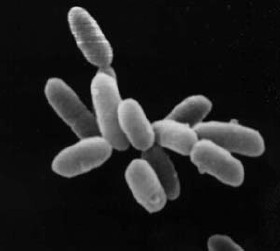
Archaea constitute a domain of single-celled microorganisms. These microbes are prokaryotes, meaning they have no cell nucleus. Archaea were initially classified as bacteria, receiving the name archaebacteria, but this classification is outdated.
